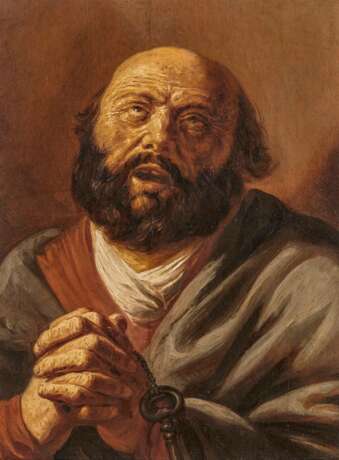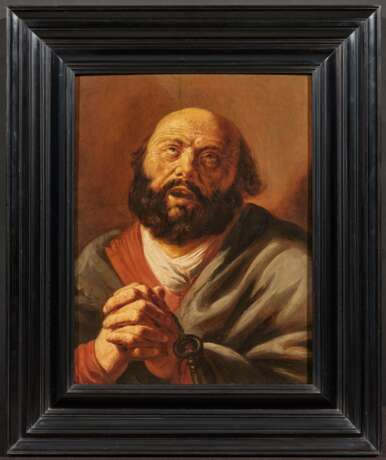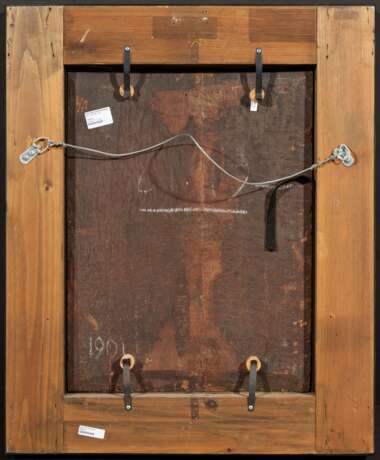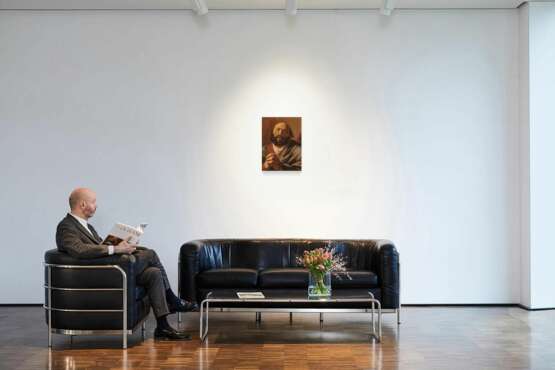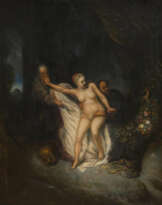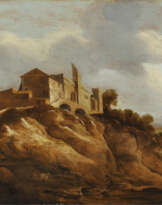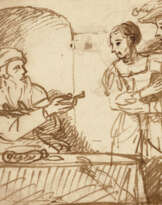ID 1208009
Лот 1014 | Jan Lievens. The Repentant Peter
Оценочная стоимость
€ 25 000 – 50 000
1607 Leiden - 1674 Amsterdam
Title: The Repentant Peter.
Date: Ca. 1625.
Technique: Oil on wood.
Measurement: 49.5 x 38cm.
im oval. Frame: Framed.
Expertise:
Listed on the online databank of the RKD, The Hague, under the ill. no. 297658.
Literature:
B. Schnackenburg: Jan Lievens: Freund und Rivale des jungen Rembrandt: mit einem kritischen Katalog des Leidener Frühwerks 1623-1632, Petersberg 2016, no. 13, p. 173.
Provenance:
Possibly Johan van der Burgh Collection, The Hague (the widow's catalogue lists a painting described as "Petrus, geschildert door Jan Lievensz." in 1741;
Art dealer Jack Kilgore, New York 2012;
Private ownership, Germany until 2019;
Art dealer Bijl-Van Urk, Alkmaar 2019;
Private ownership, Germany.
Jan Lievens, a native of Leiden, was an exceptionally precocious artist - even by the standards of the time. He learnt the profession of a painter from the age of nine: first in his home town under Joris van Schootel, then from 1618 to 1620 in Amsterdam under Pieter Lastman.
Back in Leiden, he shared a studio for five years from 1625 with Rembrandt Harmenszoon van Rijn, who also came from Leiden and was around the same age. Rembrandt had also learnt under Pieter Lastman - albeit somewhat later than Lievens and for only six months. The two painter friends specialised in portraits and history paintings and sometimes worked closely together. To this day, art historians often struggle to clearly attribute their unsigned works.
Around 1632, Jan Lievens initially went to England for three years, where he had contact with the court and was possibly influenced by Anthonis van Dyck. This was followed by periods in Antwerp, where he joined the Guild of St Luke in 1635 and was granted citizenship in 1640, in Amsterdam, The Hague, Berlin (Oranienburg Palace) and finally, from 1655, permanently back in Amsterdam. Lievens received important public and private commissions and was an extremely successful artist. However, the painter does not appear to have had any commercial talent and his many moves are also explained by his occasional flight from creditors. Jan Lievens died impoverished in Amsterdam in 1674.
It was probably around 1625 - i.e. during the period in which he shared a studio with Rembrandt in Leiden - that Jan Lievens painted the devotional painting presented here of the penitent St Peter, the patron saint of his home town of Leiden (the keys of St Peter still adorn the city's coat of arms to this day).
In the New Testament, Peter plays a special role among Jesus' disciples. He is the first disciple to follow Jesus, is chosen by him to be a fisher of men and is always at his master's side. Peter is the rock on which the Son of God wants to build his church and he is promised the keys to the kingdom of heaven by Jesus. One who was so close to the Savior himself, who is himself a saint, could be an unattainable example for believing Christians. But Peter describes himself as a "sinful man" even when he is called. He does not live up to his courageous announcement that he will fight for Jesus and die with him. Rather, all the Gospels describe that Peter, as Jesus predicted, cowardly denied his affiliation with his master three times when he was brought before the high priest Caiaphas. When the rooster crows, Peter realizes that the prophecy has come true "and weeps bitterly."
The disciple, despairing of himself, his infidelity and his cowardice, dissolved in tears is a motif that artists have repeatedly depicted since the Renaissance and especially in the Baroque period. The image type "Peter in lacrima" was able to show ordinary mortals that even the first of Jesus' disciples was weak and all too human. The exemplary recognition of man's inevitable sinfulness and his surrender to God's grace made the figure of Peter a motif in the Protestant Netherlands that could mediate between old and new faith. This painting shows Peter, following the pictorial tradition, almost bald. However, his full, dark beard, with only a few light strands running through it, makes him appear younger than is usually the case with this type of image. The face is also distorted and wrinkled because of the strong emotions. But his hands folded in imploring prayer, holding the key as an attribute, belong to a man who is in the middle of life; a weather-beaten fisherman, such as the Dutch painter may have observed among the people.
Jan Lievens had already come into contact with influences from Italy through his teacher Pieter Lastman. Since around 1615, however, the Utrecht Caravaggists who returned from Rome had brought completely new artistic impressions and stylistic devices to the Netherlands, which also find their way into Lieven's present painting. The strong lighting that hits the praying saint coming from the upper left corner of the picture is just as much a part of it as the realistic portrayal of personality described. The strong, pasty application of paint, the modeling of the wrinkles and, particularly strikingly, the hands also show the similarity between the personal styles of Lievens and Rembrandt.
| Автор: | Ян Ливенс I (1607 - 1674) |
|---|---|
| Техника исполнения: | Масло |
| Категория аукционного дома: | Старые мастера |
| Автор: | Ян Ливенс I (1607 - 1674) |
|---|---|
| Техника исполнения: | Масло |
| Категория аукционного дома: | Старые мастера |
| Адрес торгов |
VAN HAM Kunstauktionen GmbH Hitzelerstr. 2 50968 Köln Германия | ||||||||||||||
|---|---|---|---|---|---|---|---|---|---|---|---|---|---|---|---|
| Предосмотр | |||||||||||||||
| Телефон | +49 221 92586215 | ||||||||||||||
| Факс | +49 221 92 58 62 4 | ||||||||||||||
| Комиссия | 32% | ||||||||||||||
| Условия использования | Условия использования | ||||||||||||||
| Часы работы | Часы работы
|
